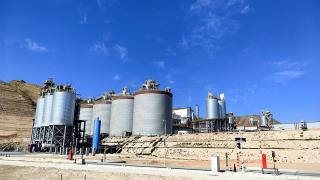While grinding technology has advanced considerably over recent years, the right choice of mill and improved operation of mills are still key to grinding efficiency. While energy efficiency has become the driving force in grinding technology, Kline Consulting considers some of the other important factors when specifying grinding equipment. By John Kline & Charles Kline, Kline Consulting LLC, USA.
Today there are many choices in cement grinding equipment. The traditional means for cement grinding was using ball mills. A ball mill is essentially a rotating drum filled to a certain level with grinding media. For cement, the grinding media almost always consist of chrome steel balls of various sizes.
In early designs, the ball mills had a single chamber with a single pass of material through the mill. The design evolved with external classifiers to separate fine product from coarse material. This coarse material was then returned to the ball mill for further grinding. Most ball mills today use two chambers for grinding and have a length-to-diameter ratio of around 3:1. Refinements in ball mill design included better liner and diaphragm designs. Ball mill air sweep was also improved to remove more fines. Today mill sweep of 1m/s or higher is recommended.
